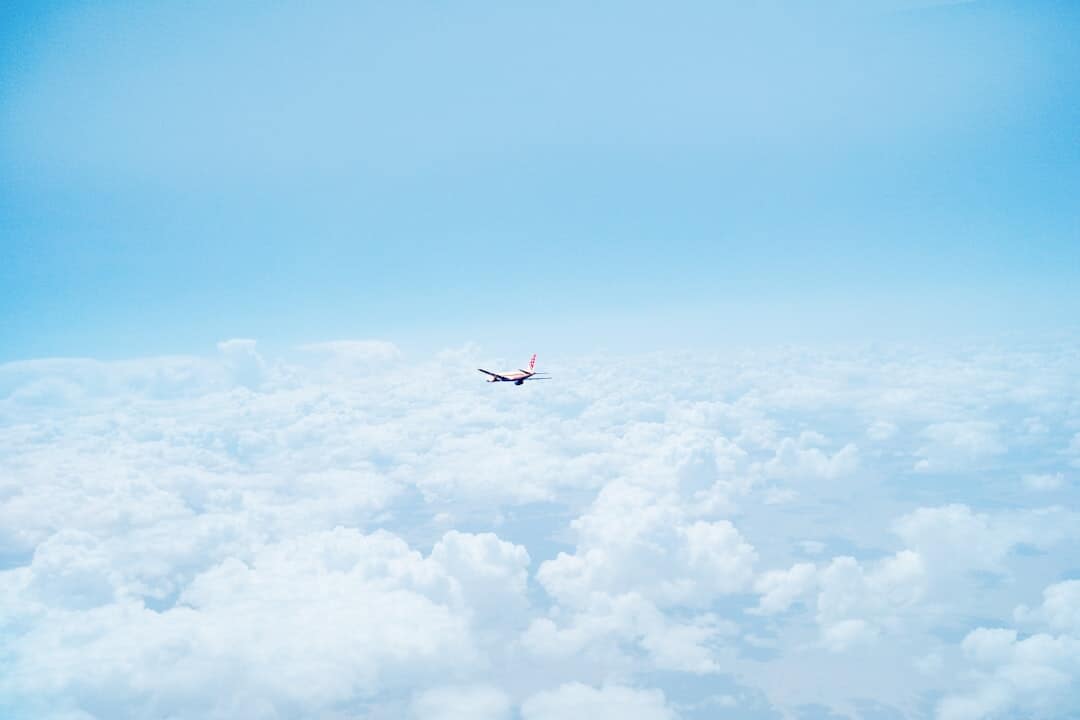
High Flyn Photos: 5 Powerful Reasons to Boost Sales in 2025
What Are High Fly’N Photos and Why They Matter
High flyn photos capture stunning aerial perspectives that ground-level photography simply can’t match. These liftd shots use drones, aircraft, telescopic masts, or even hang gliders to showcase subjects from dramatic angles above.
Quick Answer: High Fly’N Photos Explained
– Definition: Aerial photography taken from liftd positions (drones, masts, aircraft)
– Key advantage: Show context, scale, and surroundings in one frame
– Main uses: Real estate (sell 68% faster), events, motorsports, business marketing
– Equipment: Drones, vehicle-mounted masts up to 25 meters, aircraft, hang gliders
– Cost: More affordable than traditional aircraft photography
– Legal: Requires FAA licensing for commercial drone use
Whether you’re selling property, documenting motorsports action, or capturing events, high fly’n photos deliver the wow factor that makes viewers stop scrolling. They reveal the bigger picture – literally.
Properties with aerial images are 32% more likely to sell than those without. For motorsports, these shots capture the full spectacle of jumps, crowds, and track layouts that ground cameras miss.
The technology ranges from simple vehicle-mounted masts extending 25 meters high to sophisticated drone systems with stabilized cameras. Each method offers unique advantages for different situations and budgets.
I’m Jeremy Rivera, and through my work building community connections at Terp Bros, I’ve seen how liftd perspectives – whether in business or photography – reveal stories that ground-level views can’t tell. My experience in construction and safety consulting taught me to appreciate the power of high flyn photos for showcasing projects and capturing the full scope of what we’re building together.
What Makes High Fly’N Photos Different?
When you first see high flyn photos, something clicks. It’s like suddenly understanding a puzzle you didn’t even know was incomplete. While ground-level shots show you pieces of the story, aerial perspectives reveal the whole narrative in one stunning frame.
Think about it this way – a regular photo of a house shows you the front door and maybe a nice garden. But lift that camera 50 feet up, and suddenly you see how the property connects to the neighborhood, where the kids’ school is located, and why that backyard is actually perfect for weekend barbecues. The Advantage of Higher Shots over ground level becomes crystal clear when you compare these two completely different stories.
High flyn photos transform ordinary subjects into extraordinary visual experiences. Professional aerial photographers can capture 360º panoramic shots from heights reaching 25 meters, creating immersive virtual tours that let viewers explore spaces as if they’re soaring overhead themselves.
The magic happens because altitude gives context that ground-level photography simply cannot provide. A motorsports event photographed from track level shows fast cars and excited fans. But capture that same event from above, and you reveal the choreographed dance of pit crews, the flowing patterns of spectator movement, and the incredible engineering of the track layout itself.
5 Reasons High Flyn Photos Blow Ground Shots Away
Height reveals the complete story in ways that ground photography never can. When you photograph a motorsports venue from above, viewers see how the track layout flows, where the pit areas connect, how spectator sections relate to the action, and even how parking logistics work. This complete context helps people understand the full scale and organization of what they’re looking at.
Viewer engagement jumps dramatically with aerial perspectives. People don’t just glance at high flyn photos – they study them. They zoom in to explore details, trace pathways with their eyes, and spend significantly more time examining the image. This extended engagement translates directly into increased interest and inquiries for businesses using aerial photography.
Real estate sales accelerate by 68% when properties include aerial photography. The liftd perspective helps potential buyers understand critical factors like lot size, neighborhood character, and proximity to amenities that influence purchase decisions. Buyers can visualize how the property fits into their lifestyle before ever stepping foot on the lot.
Safety becomes a major advantage for action photography. Motorsports photographers can capture dramatic jumps, high-speed passes, and even crash sequences while maintaining safe distances from dangerous track conditions. This safety margin actually enables better shots because photographers can position themselves in optimal locations without worrying about flying debris or vehicle contact.
The wow factor simply cannot be replicated at ground level. Whether you’re marketing a business, promoting an event, or selling property, high flyn photos make people stop scrolling through their feeds and pay attention. That moment of visual surprise often determines whether someone becomes genuinely interested or moves on to the next listing.
Sample High Flyn Photos in Motorsports
Monster truck events showcase aerial photography at its most spectacular. From ground level, you witness massive trucks crushing cars with incredible power. But high flyn photos reveal the precise choreography of multiple trucks performing synchronized jumps while capturing the scale and energy of thousands of cheering spectators creating a living amphitheater of excitement.
Motocross whips become pure art when captured from above. The rider’s body position, bike angle, and trajectory create dynamic compositions that trackside photographers simply cannot achieve. Aerial perspectives also reveal the track’s technical complexity – showing jump sequences, rhythm sections, and elevation changes that help viewers appreciate the skill required to steer these challenging courses.
Rally racing through forests and mountains demands aerial documentation to showcase the sport’s incredible scope. High flyn photos reveal cars threading through narrow forest paths, climbing mountain switchbacks, and navigating terrain that appears almost impossible from ground-level viewpoints. The contrast between tiny vehicles and massive landscapes tells the story of human determination against natural obstacles.
Stadium crowd shots transform individual spectators into living artwork when photographed from above. Team colors create flowing patterns, wave movements ripple through sections, and collective celebrations become stunning visual narratives of shared community experiences that ground-level photography cannot capture.
Top Industries Soaring with High Fly’N Shots
The revolution in high flyn photos extends far beyond motorsports, changing how multiple industries showcase their offerings and engage customers. Professional Aerial Photographers Association members report consistent growth across real estate, tourism, construction, events, and commercial marketing sectors.
The return on investment for aerial photography consistently exceeds traditional ground-level marketing across these industries. Businesses report increased engagement, faster sales cycles, and higher conversion rates when incorporating liftd perspectives into their marketing strategies.
Real-Estate Listings that Sell 68% Faster
Real estate professionals have acceptd aerial photography as an essential marketing tool, and the results speak volumes. Properties featuring high flyn photos consistently outperform traditional listings in both time-to-sale and final sale prices.
Neighborhood Overview Advantage
Aerial shots reveal what ground-level photos cannot – the complete neighborhood context. Buyers see proximity to schools, parks, shopping centers, and transportation hubs in single comprehensive images. This context helps buyers understand not just the property, but the lifestyle it offers.
Lot Size Clarity
Property boundaries become crystal clear from aerial perspectives. Buyers can accurately assess yard space, privacy levels, and future expansion possibilities. This transparency reduces surprises during property visits and helps qualify serious buyers before scheduling showings.
Amenity Proximity Visualization
Swimming pools, tennis courts, gardens, and outdoor entertainment areas gain proper context when photographed from above. Buyers understand spatial relationships and flow between different property areas, making it easier to envision their lives in the space.
High Exposure Visuals clients report homes selling in under two weeks at full price after implementing professional aerial photography campaigns. This dramatic improvement in sales velocity reflects buyers’ strong response to comprehensive property visualization.
Events & Festivals from the Sky
Event photography reaches new heights – literally – with aerial perspectives that capture the full energy and scale of gatherings. From music festivals to corporate events, liftd shots tell stories that ground-level photography simply cannot match.
Site Layout Documentation
Aerial event photography reveals how organizers use entire venues. Attendees see stage positioning, vendor layouts, seating arrangements, and traffic flow patterns that help them steer events more efficiently. This comprehensive view improves the attendee experience while showcasing organizers’ planning expertise.
Sponsor Signage Maximization
Corporate sponsors invest heavily in event partnerships, and aerial photography maximizes their visibility. Liftd shots capture banner placements, branded structures, and logo positioning across entire event sites, providing sponsors with valuable documentation of their marketing investment returns.
Social Media Buzz Creation
High flyn photos generate significantly more social media engagement than ground-level event shots. Attendees share aerial images that showcase the event’s scale and their participation in something spectacular, creating viral marketing effects that extend events’ reach far beyond physical attendance.
Business & Tourism Boosts
Tourism and hospitality businesses leverage aerial photography to showcase location advantages and amenity offerings that ground-level shots cannot effectively communicate.
Hotel Location Context
Hotels use aerial photography to demonstrate proximity to beaches, ski slopes, city centers, or other key attractions. These liftd perspectives help travelers understand exactly what they’re booking and set appropriate expectations for their stays.
Resort Amenity Showcase
Resort properties benefit enormously from aerial documentation of their complete offerings. Pool complexes, golf courses, beach access, and recreational facilities gain proper context when viewed from above, helping potential guests understand the full scope of available activities.
Virtual Tour Integration
360º panoramic aerial photos integrate seamlessly with ground-level virtual tours, creating comprehensive property experiences that let potential visitors explore destinations before booking. This technology reduces booking uncertainty while increasing conversion rates for tourism businesses.
Gear & Techniques Behind Every Epic Frame
Creating professional high flyn photos feels like magic, but it’s really about matching the right equipment to each unique situation. Whether you’re capturing a monster truck rally or showcasing a beautiful property, understanding your gear options makes all the difference between good shots and jaw-dropping results.
The world of aerial photography equipment has exploded in recent years. Drones have revolutionized the industry by making aerial shots accessible to photographers who once needed expensive helicopter rentals. But drones aren’t the only game in town – telescopic masts mounted on vehicles can reach up to 82 feet high, offering rock-solid stability that drones can’t match in windy conditions.
Traditional aircraft photography still has its place for large-scale projects, while adventurous photographers sometimes use hang gliders for truly unique perspectives. Each method brings its own strengths and challenges to the table.
| Method | Height Range | Cost | Stability | Weather Limits | Best For |
|---|---|---|---|---|---|
| Drones | 0-400ft | $500-$15,000 | Excellent | Wind sensitive | Most applications |
| Vehicle Masts | 0-82ft | $10,000-$50,000 | Very stable | All weather | Real estate, events |
| Aircraft | 500ft+ | $500-$2,000/hour | Good | Weather dependent | Large properties, surveys |
| Hang Gliders | Variable | Equipment + training | Pilot dependent | Fair weather only | Trip photography |
Smart aerial photographers keep multiple tools in their arsenal. You might use a drone for most jobs, but when winds pick up or you need that extra stability, having a mast system available saves the day. The key is knowing which tool fits each specific project’s needs and budget.
Gimbals and stabilization systems deserve special mention here. These mechanical marvels keep cameras steady even when the platform is moving, ensuring your high flyn photos come out crisp and professional. Modern gimbal technology has become so advanced that even handheld shots can look like they were taken from a perfectly stable platform.
How Pros Capture Crystal-Clear High Flyn Photos
The difference between amateur aerial shots and professional high flyn photos often comes down to technical execution. Pros understand that shooting from the air presents unique challenges that ground photography never encounters.
RAW files are absolutely essential for aerial work. The lighting conditions up there change constantly – you might have bright sky in one part of your frame and deep shadows on the ground in another. RAW format gives you the flexibility to pull detail out of both areas during post-processing, something JPEG files simply can’t handle.
Bracketing exposures has become standard practice among professional aerial photographers. Instead of taking one shot and hoping for the best, they capture multiple exposures of the same scene. This technique ensures they can handle any lighting situation, from sunrise backlighting to harsh midday sun.
Golden hour timing transforms ordinary aerial shots into extraordinary ones. That magical hour after sunrise and before sunset provides soft, warm light that adds depth and drama to liftd perspectives. The low angle of the sun creates beautiful shadows that reveal texture and dimension in ways that flat midday lighting never could.
Wind limits are the reality check every aerial photographer faces. Most drones become unstable in winds above 25 mph, and even experienced pilots ground their aircraft rather than risk equipment or image quality. This is where vehicle-mounted masts shine – they stay rock steady in conditions that would make drone flight impossible.
Understanding your equipment’s limitations isn’t about playing it safe – it’s about delivering consistent professional results every time. Weather apps become your best friend, and experienced aerial photographers check conditions multiple times before heading out on shoots.
Legal & Safety Must-Knows
Flying cameras in the air comes with serious legal responsibilities that every professional aerial photographer must understand. The rules aren’t just suggestions – they’re federal law, and violations can result in hefty fines and equipment seizures.
FAA Part 107 certification is mandatory for anyone doing commercial drone work. This isn’t just a quick online quiz – it’s a comprehensive test covering airspace regulations, weather interpretation, aircraft performance, and emergency procedures. The exam costs $175 and you’ll need to renew your certification every 24 months to stay current.
Insurance coverage becomes crucial when you’re operating aircraft for commercial purposes. Your regular photography insurance policy probably excludes aerial operations entirely, leaving you exposed to potentially massive liability claims. Specialized aerial photography insurance covers both equipment damage and third-party liability, protecting your business and your clients.
No-fly zones exist everywhere, and they change constantly. Military installations, airports, national parks, and temporary flight restrictions can pop up with little notice. Apps like AirMap and B4UFLY help identify restricted areas, but the responsibility for compliance always rests with the pilot.
Client approvals and clear contracts protect everyone involved in aerial photography projects. These agreements should cover image usage rights, privacy considerations, delivery timelines, and weather contingency plans. When clients understand what to expect and photographers know exactly what they’re delivering, projects run smoothly and everyone stays happy.
The legal landscape around aerial photography continues evolving as the technology advances. Staying informed about current regulations isn’t just good business practice – it’s essential for operating safely and legally in this exciting field.
Hiring or DIY: How to Get Your Own High Fly’N Photos
The decision between hiring professional aerial photographers or developing in-house capabilities depends on budget, frequency of need, and quality requirements. Both approaches offer distinct advantages for different situations and organizational needs.
Professional aerial photography services typically range from $200-$500 for basic real estate shoots to $2,000+ for complex commercial projects. Turnaround times vary from same-day delivery for simple projects to 2-3 weeks for extensive editing and post-production work.
Working with a Certified Aerial Photographer
Quote Process and Expectations
Professional aerial photographers provide detailed quotes covering flight time, editing work, travel expenses, and deliverable specifications. Clear communication about project scope, timeline, and budget constraints ensures successful collaborations and appropriate expectation setting.
Shot List Development
Successful aerial photography projects begin with comprehensive shot lists detailing specific angles, compositions, and coverage requirements. Clients should provide reference images, property maps, and priority rankings to help photographers maximize limited flight time efficiently.
Deliverable Specifications
Professional photographers deliver images in multiple formats optimized for different uses – high-resolution files for print marketing, web-optimized versions for online use, and social media formats for digital marketing campaigns. Clear deliverable specifications prevent misunderstandings and ensure clients receive appropriate files.
Revision Protocols
Professional aerial photography contracts typically include one round of minor revisions covering color correction, cropping adjustments, and basic retouching. Additional revisions incur extra charges, making clear initial communication essential for project success.
Launching Your Own Side Hustle
Equipment Investment Strategy
Starting an aerial photography business requires careful equipment selection balancing capability, reliability, and budget constraints. Entry-level professional setups cost $3,000-$8,000, while advanced systems can exceed $20,000 for specialized applications.
Licensing and Certification Path
Aspiring aerial photographers must obtain FAA Part 107 certification before accepting commercial work. Preparation courses cost $200-$500, while the certification exam costs $175. Many photographers also pursue additional training in photography techniques and business operations.
Marketing and Client Development
Successful aerial photography businesses develop strong online portfolios showcasing diverse project types and technical capabilities. Social media marketing, real estate agent partnerships, and local business networking provide primary client acquisition channels for new operators.
Insurance and Business Basics
Aerial photography businesses require specialized insurance coverage, business licensing, and liability protection. Professional associations provide resources for new operators navigating regulatory requirements and industry best practices.
Frequently Asked Questions about High Fly’N Photos
Are High Flyn Photos Legal in Urban New York?
High flyn photos are absolutely legal in New York City, though you’ll need to steer some important rules. The good news? It’s totally doable with the right knowledge and certification.
Here’s the reality: drone operations need FAA Part 107 certification for any commercial work, and NYC has its own specific regulations on top of federal rules. Manhattan can be tricky with all its restricted airspace, but plenty of areas in Queens, Brooklyn, and the Bronx welcome drone operations when you have proper authorization.
The key is understanding that New York’s airspace is like a complex puzzle. Professional aerial photographers use specialized apps to check current restrictions and get the necessary flight clearances. When drone operations hit roadblocks, vehicle-mounted mast systems offer fantastic alternatives that can reach impressive heights without dealing with airspace restrictions.
For areas like Astoria, Queens, Woodside, and Jackson Heights, drone operations are generally permitted with proper certification and airspace clearance. The challenge comes from being near LaGuardia and JFK airports, which creates layers of complexity that really benefit from professional expertise.
The bottom line? Yes, it’s legal, but working with certified professionals saves you headaches and ensures everything’s done by the book.
How Much Does a Typical Real-Estate Aerial Shoot Cost?
Real estate aerial photography pricing varies quite a bit, but here’s what you can expect. Basic residential shoots typically run $200-$400, while luxury properties or commercial real estate can jump to $500-$1,500 depending on complexity.
Several factors influence the final price. Flight time requirements matter most – larger properties need more coverage, which means more time in the air. Travel distance adds costs too, especially for photographers heading to remote locations. Editing complexity can bump prices when you need HDR processing, virtual staging, or panoramic stitching work.
The number of final images you receive affects pricing, as does rush delivery timing. Need same-day or next-day turnaround? Expect premium pricing for that speed.
Vehicle-mounted mast photography often costs slightly more due to equipment complexity, but it delivers superior stability and works in weather conditions that would ground drones. The investment typically pays for itself quickly through faster sales and higher final sale prices.
Most real estate professionals find aerial photography one of their best marketing investments. When properties sell 68% faster with aerial shots, even premium pricing makes financial sense.
What File Formats Will I Receive for Marketing Use?
Professional aerial photographers understand that different marketing needs require different file formats. You’ll typically receive a comprehensive package designed to cover all your promotional activities.
High-resolution files come in 300 DPI JPEG or TIFF formats, perfect for print marketing materials, large format displays, professional presentations, and archive storage. These files maintain crystal-clear quality even when printed at substantial sizes.
Web-optimized files arrive as 72 DPI JPEGs, sized perfectly for website galleries, email marketing campaigns, online listings, and social media posting. These smaller files load quickly while still looking sharp on screens.
Many photographers also provide panoramic and 360º files that integrate seamlessly with virtual tour platforms, interactive website features, VR headset compatibility, and specialized viewing applications.
Most professionals deliver images through secure online galleries, letting you download files immediately when projects complete. Cloud storage keeps your high flyn photos accessible for future marketing campaigns without eating up your local storage space.
The variety of formats ensures you’re covered whether you’re creating print brochures, updating websites, or posting to social media. Professional photographers understand that versatility in deliverables maximizes your marketing investment.
Ready to Lift Your Perspective?
High flyn photos aren’t just about getting cameras up high – they’re about seeing the world differently. When you capture that perfect aerial shot of a motocross jump or showcase a property from above, you’re telling stories that ground-level photos simply can’t tell.
The technology keeps getting better and more affordable every year. What used to require expensive helicopter rentals now happens with drones that cost less than a decent camera. Vehicle-mounted masts give you rock-solid stability, while hang gliders offer that adventurous edge for truly unique shots.
Here in Queens, I’ve watched our community grow and change through my work at Terp Bros. Just like high flyn photos reveal connections you never noticed before, building strong communities means looking at familiar neighborhoods from fresh angles. Sometimes you need to step back – or fly up – to see the bigger picture.
Whether you hire a pro or grab your own gear, great aerial photography isn’t just about fancy equipment. The drone captures the image, but your eye creates the story. The best aerial shots make people stop scrolling and really look at what you’re showing them.
The view from above changes everything. When we’re working to build stronger communities throughout Astoria, Woodside, Jackson Heights, and beyond, we’re constantly reminded that perspective matters. The problems that seem huge from ground level often look different when you see how everything connects.
That liftd perspective – whether it’s through a camera lens or community work – helps us understand relationships we might have missed. It shows us opportunities hiding in plain sight and reminds us that every story has multiple angles worth exploring.
Terp Bros invites you to keep flying high—learn more about the culture that inspires our community imagery at Cannabis 101.










